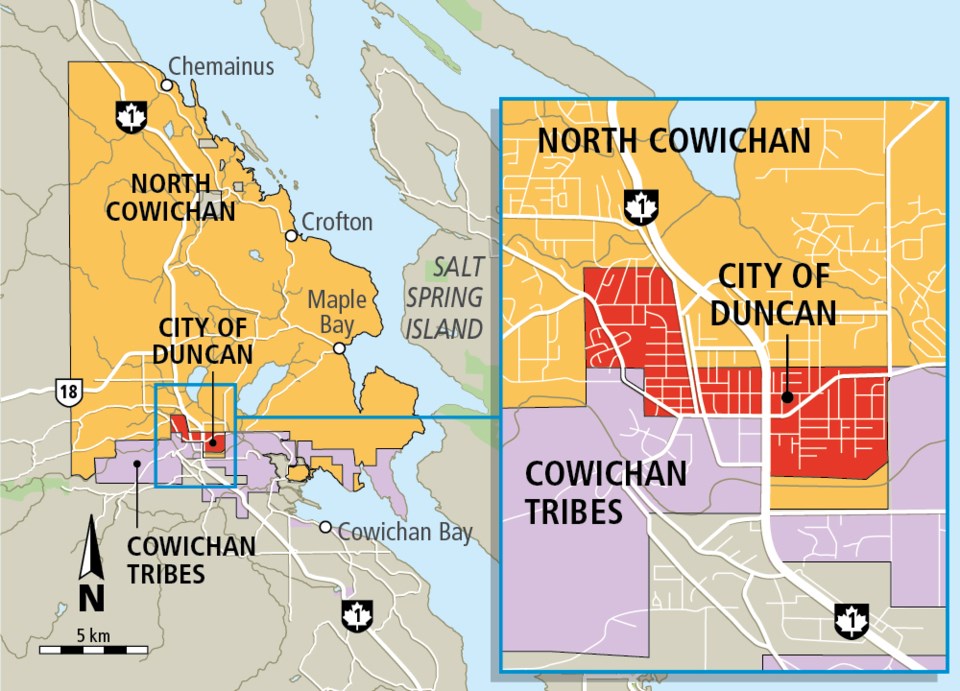Duncan and North Cowichan won’t be amalgamating, after Duncan citizens overwhelmingly rejected the idea.
Preliminary results from Saturday’s vote show 68 per cent of Duncan voters were against amalgamating with their municipal neighbour, with 835 voting against and 395 voting in favour.
In North Cowichan, 59 per cent of voters were in favour of amalgamating, with a vote of 3,051 for and 2,140 against.
In B.C., amalgamation must be approved by more than 50 per cent of voters in each municipality.
“The people have spoken — and they have spoken clearly,” said Duncan Mayor Phil Kent. “Those are pretty solid numbers from a voter turnout of about 30 per cent.”
Kent has been vocal on his assessment that Duncan’s future would not be protected within a district that also contained other urban areas of North Cowichan, such as Chemainus and Crofton.
“We are a very distinct area, with a very vibrant economy and strong identity,” he said.
During the municipal elections in 2014, a majority of residents in each municipality — 68 per cent from North Cowichan and 52 per cent in Duncan — indicated they wanted to pursue an amalgamation study.
A citizens assembly was formed to consider the financial and technical impacts of amalgamation.
The final recommendation by the body called for the two municipalities to endorse amalgamation and proceed with a referendum based on gaining efficiencies in expenditures and service delivery.
That led to Saturday’s referendum.
Prior to 1912, Duncan and North Cowichan were a single municipality. Duncan became a separate city because a group of businessmen decided they wanted sidewalks and petitioned the province to let them secede from North Cowichan.
A referendum on amalgamation was also held in the 1970s.
North Cowichan encompasses an area of 194 square kilometres and has a population of 29,676, according to the 2016 census. Duncan covers about 2.1 square kilometres and has a population of 4,944.



